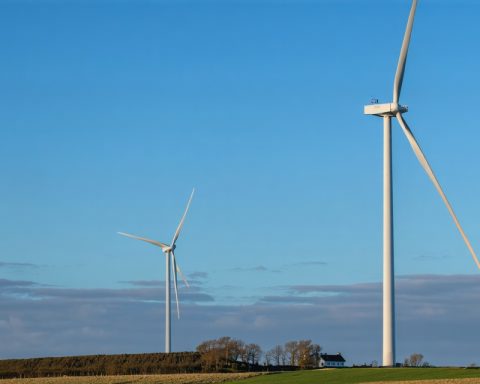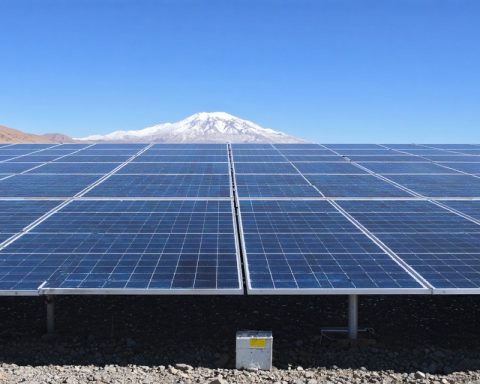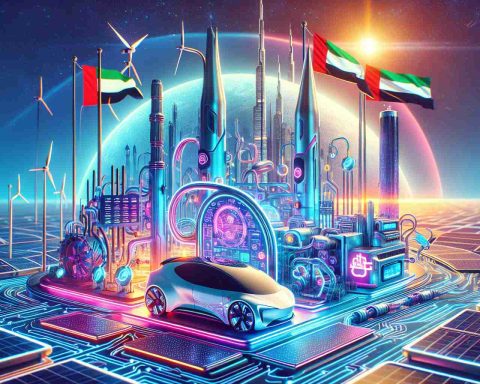Understanding the Latest Developments in Clean Hydrogen Production
On January 3, 2025, the Treasury Department and the IRS revealed finalized regulations governing the Section 45V Clean Hydrogen Production Tax Credit. This announcement follows extensive feedback gathered since the initial proposed rules were released on December 26, 2023. A significant number of stakeholders contributed to the discussion, submitting roughly 30,000 comments and participating in a comprehensive public hearing.
Adding to the momentum, the Biden Administration announced a substantial $1.66 billion loan guarantee to Plug Power aimed at enhancing clean hydrogen production. However, with a shift in the political landscape and the impending Trump Administration, uncertainties loom over the future implementation of these regulations.
The finalized rules introduced several modifications, especially regarding the pivotal “three pillars” of the Energy Attribute Certificate (EAC) framework, which aims to ensure the integrity of the tax credit without imposing stringent constraints on the industry. Flexibility was increased in areas like the definition of “incremental” electric generation, which allows more pathways to fulfill the requirements.
New provisions permit contributions from decommissioned facilities that restart operations and also recognize qualifying nuclear reactors. Furthermore, while the hourly-matching requirement for electricity usage was extended to 2030, a focus remains on meeting lifecycle emissions standards to uphold the environmental integrity of the clean hydrogen initiative.
These developments mark a significant step forward in the pursuit of clean energy solutions and highlight the evolving nature of the hydrogen production sector.
The Broader Impact of Clean Hydrogen Production Developments
The recent advancements in clean hydrogen production highlight not just a shift in energy policy, but also a potential turning point for societal and cultural attitudes towards sustainability. As governments and industries increasingly pivot to renewable energy sources, hydrogen—properly produced—stands to become a cornerstone of a low-carbon economy. This transition is not merely technical; it reflects changing values in society that prioritize environmental stewardship and innovation.
The economic implications of the finalized Clean Hydrogen Production Tax Credit are considerable. Clean hydrogen can significantly reduce carbon emissions from sectors traditionally hard to decarbonize, such as heavy industry and transportation. As adoption grows, ancillary industries tied to hydrogen production, storage, and transportation are likely to flourish, creating thousands of new jobs and bolstering local economies. Increased investment in this sector could yield advances in technology, driving down costs and enhancing efficiency, further catalyzing its market potential.
However, it is essential to acknowledge the environmental trade-offs. While hydrogen production can minimize greenhouse gas emissions, methods of production remain critical. The reliance on fossil fuels in “grey” hydrogen production could negate environmental benefits if not carefully managed. Long-term strategies must ensure a robust infrastructure for renewable energy sources, including solar and wind, to power hydrogen production sustainably.
Future trends suggest a growing confluence of hydrogen innovation with advancements in electric vehicles and energy storage. As countries set ambitious emissions targets, clean hydrogen may play a key role in energy systems of the future. The integration of hydrogen into everyday applications could redefine energy consumption patterns, making it a powerful player against climate change while fostering a cleaner global economy. Embracing this path not only secures energy independence but also instills a renewed sense of purpose in addressing the climate crisis, signaling a cultural shift towards collective responsibility.
Unlocking the Future of Clean Hydrogen: Key Insights and Innovations
Understanding the Latest Developments in Clean Hydrogen Production
The recent advancements in clean hydrogen production regulations have initiated a transformative shift in the energy landscape, emphasizing environmental sustainability and energy innovation. With the finalized regulations governing the Section 45V Clean Hydrogen Production Tax Credit, stakeholders now have clearer guidelines to navigate this burgeoning market.
Key Features of the Clean Hydrogen Production Tax Credit
1. Three Pillars Framework: The updated guidelines reiterate the importance of the Energy Attribute Certificate (EAC) framework, which underpins the integrity of the tax credit. This framework is designed to balance regulatory demands with industry flexibility.
2. Incremental Electric Generation: The definition of “incremental” electric generation has been broadened, facilitating a variety of pathways for compliance. This adjustment could enhance appeal for companies exploring clean hydrogen initiatives.
3. Decommissioned Facilities Reopened: New provisions allow for contributions from facilities that have been decommissioned but are brought back into operation, further encouraging the utilization of existing infrastructure.
4. Recognition of Nuclear Energy: The regulations acknowledge qualifying nuclear reactors as part of the clean hydrogen production framework, presenting new opportunities for energy generation without carbon emissions.
5. Lifecycle Emissions Standards: While the requirement for hourly-matching in electricity usage has been extended until 2030, a robust focus remains on maintaining lifecycle emissions standards, reinforcing the commitment to environmental integrity within the clean hydrogen sector.
Pros and Cons of the New Regulations
Pros:
– Encourages the restart of decommissioned facilities, maximizing resource use.
– Provides broader definitions allowing more companies to qualify for credits.
– Integrates nuclear energy, expanding clean energy options.
Cons:
– The potential political shift raises uncertainties about long-term compliance and regulation enforcement.
– Increased complexity in meeting lifecycle emissions standards may challenge some producers.
Insights into the Financial Landscape
The Biden Administration’s substantial $1.66 billion loan guarantee to Plug Power is a significant investment that underscores the potential economic impacts of clean hydrogen technologies. This financial support is crucial for driving innovation and scaling up production capabilities in a sector that is poised for rapid growth.
Sustainability and Security Considerations
The emphasis on lifecycle emissions underscores a broader trend towards environmentally sustainable energy solutions. Clean hydrogen not only presents a way to reduce carbon emissions but also enhances energy security by diversifying domestic energy resources. This aligns with global commitments to combat climate change and achieve net-zero emissions.
Market Trends and Future Predictions
The clean hydrogen market is anticipated to evolve rapidly, driven by regulatory support and technological advancements. Predictions suggest a surge in market participation as more businesses recognize the potential profitability of clean hydrogen. The increasing demand for renewable energy sources is expected to propel investments in hydrogen production technologies, leading to further innovation.
Conclusion
The implementation of the finalized regulations for clean hydrogen production marks a pivotal moment in the energy industry. As stakeholders adjust to these new guidelines, the groundwork is laid for a more sustainable and environmentally friendly energy future. Monitoring upcoming developments, especially in the context of changing political climates, will be essential for understanding the trajectory of clean hydrogen production.
For more information on energy solutions and updates, visit Energy.gov.















